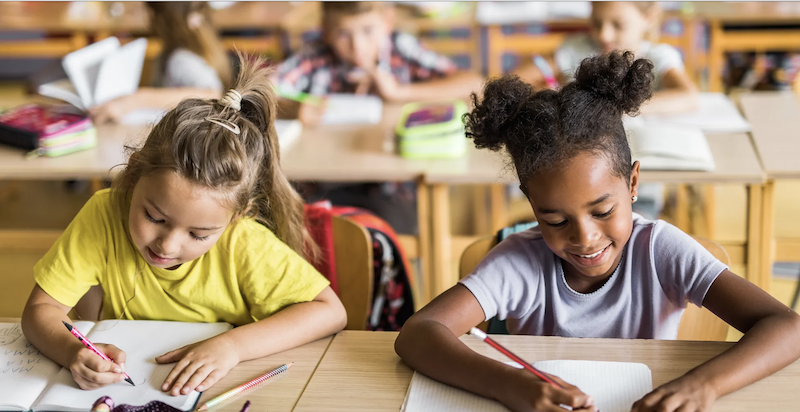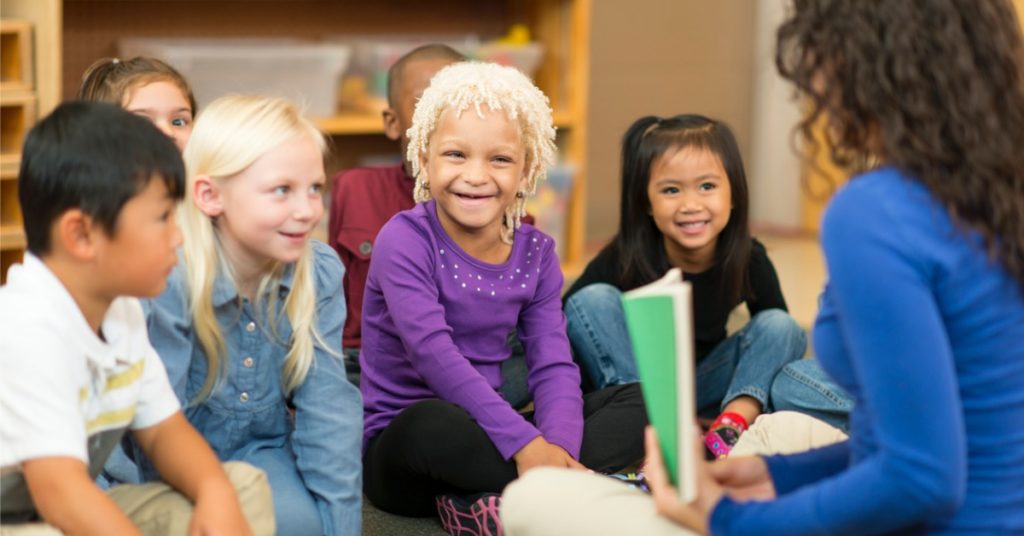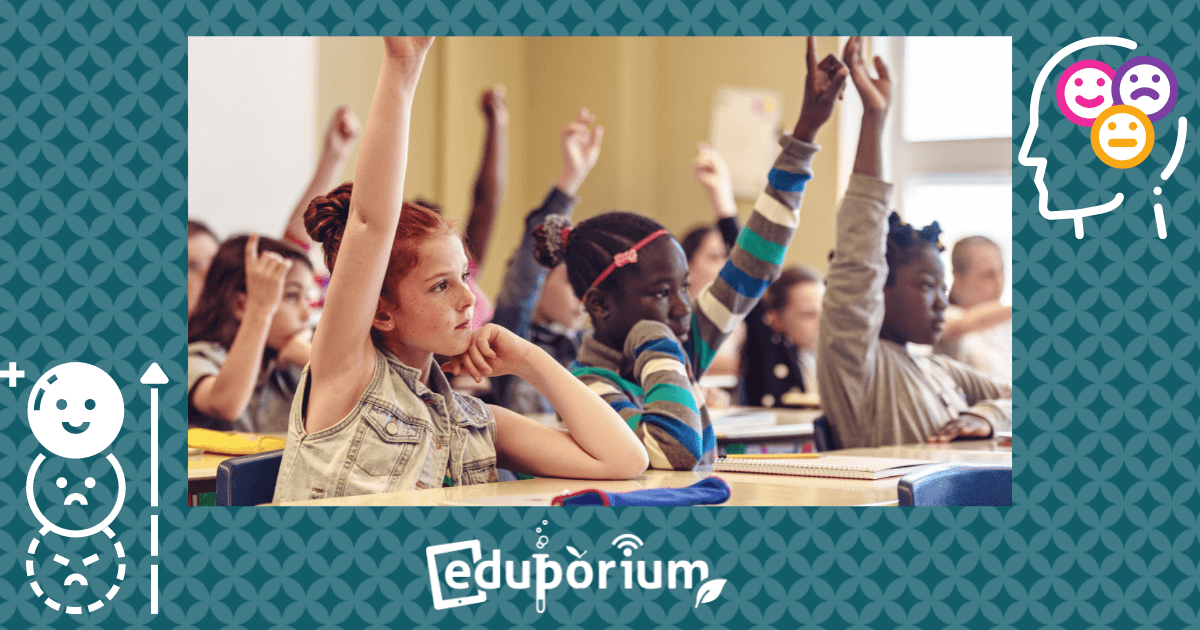With so many tricky subjects and traumatic experiences impacting a lot of today's students, focusing more on social-emotional learning to alleviate stress, build relationships, and recapture educational normalcy is a new classroom goal for many. As you know, helping students develop SEL skills goes beyond academics and contributes to whole-child development. Through SEL lessons and curriculum, students can learn key soft skills, like empathy, self-management, communication, and others. These, of course, are valuable and also help enhance how students view themselves and their relationships with others. With SEL and equity, however, equal access to these opportunities remains as important as in other learning experiences.
Using SEL elements to create equity in learning.
While SEL initiatives can really help children excel academically, it's very important that, like the rest of the curriculum, they are also designed to improve equity. A lot of times, when we think of equity in education, we think of access. Especially these days, this includes access to technology, access to resources, access to opportunities, and more. With SEL in the classroom, however, ensuring that all students will feel heard, valued, respected, and advocated for often drives equity. When educators meet these conditions, students feel more comfortable in the learning environment and can celebrate who they are in the process.

In helping students develop and apply SEL skills, educators can, over time, encourage them to reflect on the importance of personifying inclusion while celebrating their differences. This, as we already alluded to, helps all students—regardless of their personal situation—recognize the great importance of inclusion as they strengthen relationships. Perhaps more importantly, this inclusion can help close access, opportunity, and achievement gaps, although that requires long-term monitoring for comparison. So, what are the key features of an SEL program and how can educators improve equity through SEL?
The school environment is important.
The first of those is realizing the relevance that purposeful SEL has for every student. Uplifting and valuing each student's individual characteristics, backgrounds, and skills helps them to feel included and celebrate themselves. Also, it helps when teachers use equity-focused SEL strategies to improve on instruction and inclusion across the board for all kids rather than only those who may be determined to be at risk. A strong SEL foundation can help improve student mental health and classroom behavior but, in regularly creating opportunities to build social-emotional skills, it can also start to become more intrinsic for students.
To focus on creating a culture of equity in your school, you don't necessarily even need any dedicated SEL curriculum. By examining their own social-emotional competencies and beliefs, teachers can evaluate how their words and actions help children understand equity. This may involve culturally responsive teaching, working directly with children to learn more about them, or simply making a commitment to avoiding using harmful language or assumptions. It goes without saying but, if students are uncomfortable with how they perceive a teacher is treating or addressing them in the classroom, it's more difficult to focus on learning.
Long-term classroom strategies and building relationships.
Beyond initial strategies, long-term approaches for bolstering equity using SEL initiatives include student collaboration and fostering dynamic relationships with parents. First, a greater focus on collaboration in the classroom allows students to work together and communicate more. In turn, they'll get to learn more about each other and foster deeper relationships driven by social interactions. On the other hand, by consistently communicating with parents, educators can create partnerships that benefit everyone—students, parents, and themselves. Parents are often willing to provide feedback, which helps teachers continuously improve their SEL strategies while focusing on equity.

Classroom teachers can also work to ensure equity across all facets of education, including digital equity, classroom equity, and, of course, social-emotional equity. After assessing if they possess any unconscious or inherent biases, teachers can then focus on students. Relationship building, as we've said, is among the top goals and simple conversations can help teachers get to know their students better. Regular check-ins throughout the day or week can also help build camaraderie. And, some teachers find value in having kids fill out questionnaires or surveys about their likes, hobbies, or home situations. This helps them with better understanding each individual situation as they try to empathize and relate to them.
Designing classroom lessons with elements of SEL and equity.
In designing classroom lessons for advancing SEL and equity, teachers might face some challenges. One viable way to overcome them is to always stay focused on the end goal—creating more equitable learning environments. With this as a priority, educators can cater instruction and messages to ensure children feel comfortable with themselves and peers. Focusing on various social-emotional implications from the onset is important as well. This helps ensure that student well-being and inclusion are top of mind in all lessons, activities, and conversations. Ideally, SEL and equity should be the driving forces within the lessons—not something teachers have to remember to incorporate.
To truly spread SEL and equity in your classrooms, educators and administrators could try developing their own self-awareness, emotional intelligence, and understanding of the differences in students from different cultures. This might mean altering language and context when educating (among other strategies) to better connect with all students. Further, they could try to make sure that all lessons contain social and emotional applications and connections. This helps students understand SEL's significance and it bolsters their own sense of belonging in the school community. In an era in which self-confidence and comfort levels are real fragile, this can help decrease some student struggles.
Moving forward with equity and SEL in mind.
Whether it's oppression, a lack of inclusion, or inequities holding kids back, everyone experiences different highs and lows at school. Focusing on understanding students' backgrounds and potentially their traumas, building relationships, and promoting inclusion and unification can advance equitable opportunities. To find some SEL classroom resources to use, check out our SEL page for more. And, if you have questions about combining SEL and STEM or SEL and MakerEd, check out additional content from our blog or reach out to our team for suggestions. Follow us on Twitter and Instagram for more.



